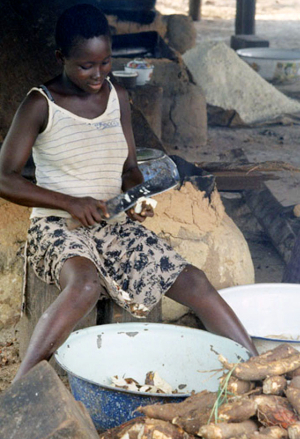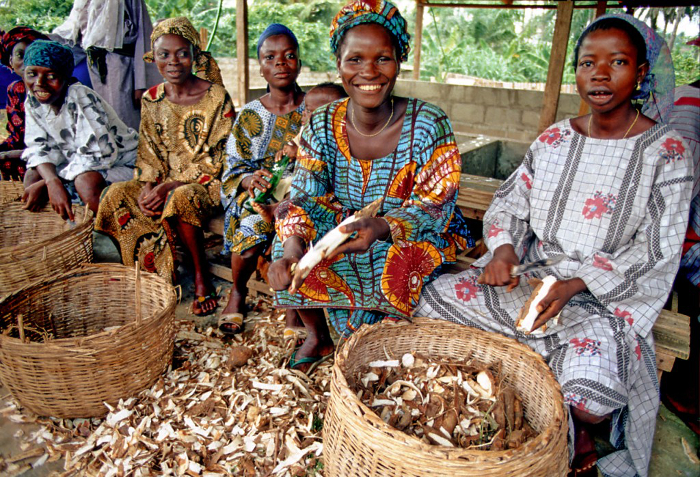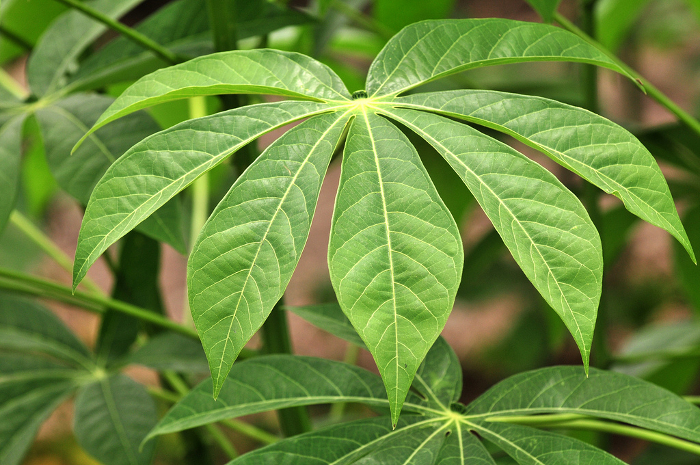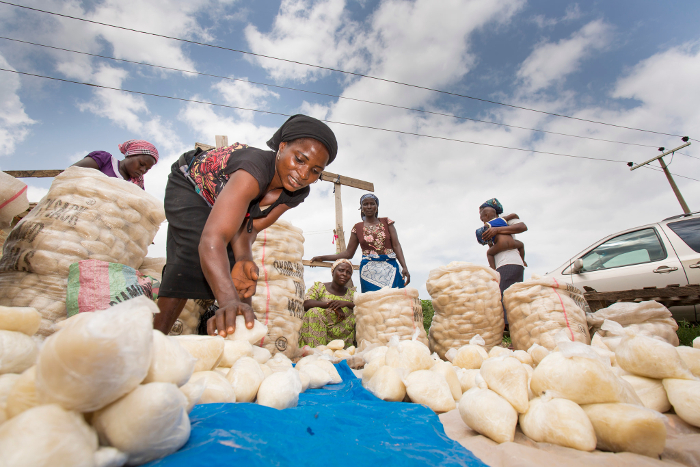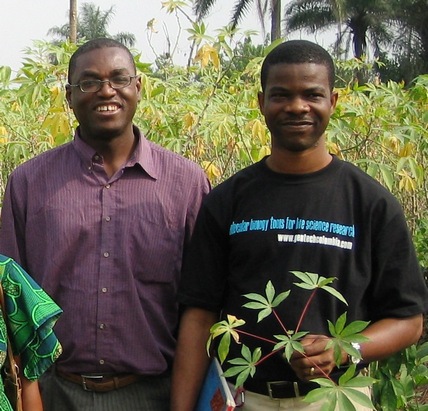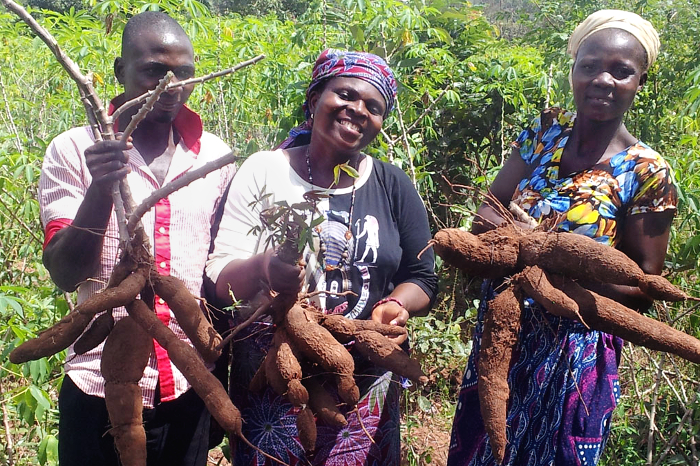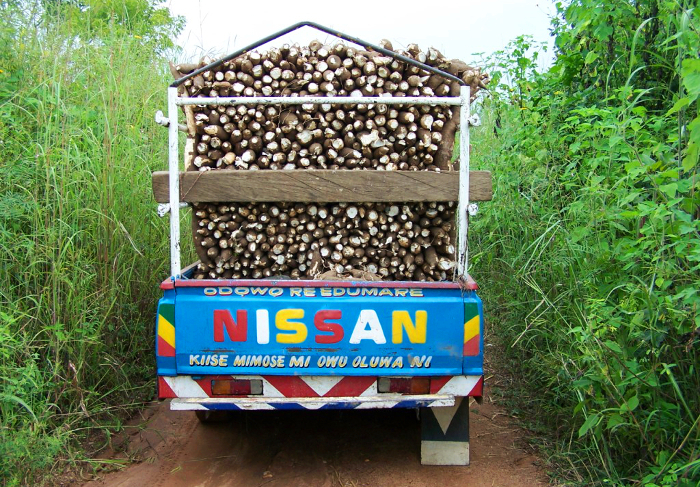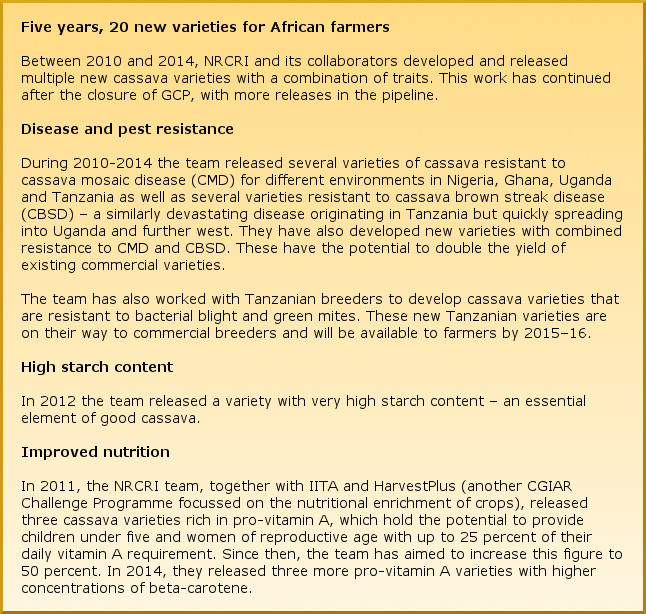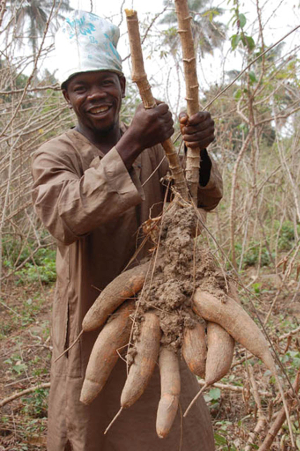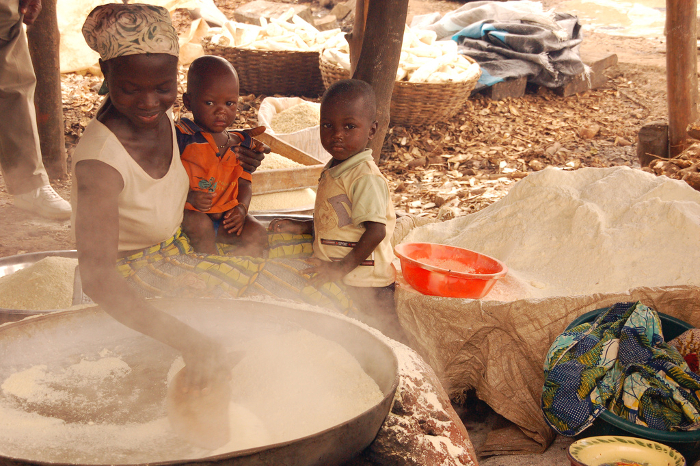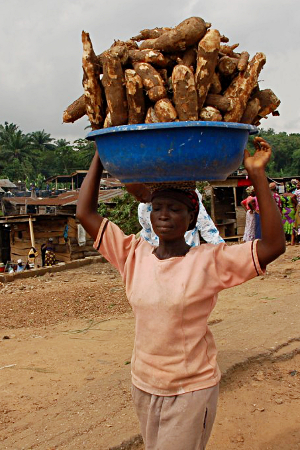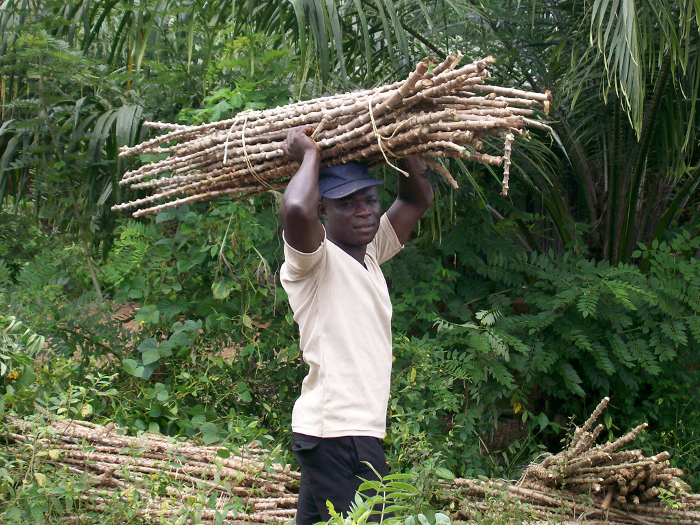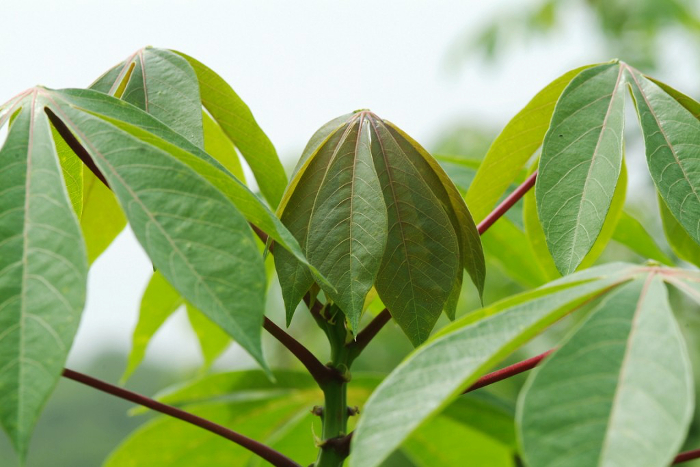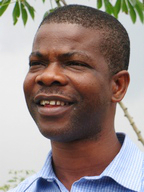 “You can use any technology in the world, you can develop any product, but you need the products that farmers are willing to grow in their field.”
“You can use any technology in the world, you can develop any product, but you need the products that farmers are willing to grow in their field.”
So says Chiedozie Egesi, a plant breeder and geneticist who has been one of the inspirational leaders and Principal Investigators for the CGIAR Generation Challenge Programme’s (GCP) Cassava Research Initiative in Africa.
It was his commitment to helping farmers that led Chiedozie to forsake his dream of becoming a surgeon, and instead to train as a plant breeder and help smallholder farmers in Nigeria. Having grown up in a small town in south-eastern Nigeria where poverty was a daily reality, he was particularly concerned about food security and nutrition for the people. He dreamt of developing cassava varieties that could beat the pests and diseases that often devastate such crops.
“The food people grow should be nutritious, resistant and high-yielding enough to allow them to sell some of it and make money for other things in life, such as building a house, getting a motorbike or sending their kids to school,” Chiedozie says.
Nigeria is the most populous African country, with a population of more than 174 million. The main staple food is cassava, making Nigeria the world’s largest producer and consumer of the crop. But cassava is also important in other African countries. It is grown by nearly every farming family in sub-Saharan Africa. Africa produced nearly 140 million metric tonnes of cassava in 2012 – but most of the production is low-yielding subsistence farming for food by small-scale farmers for food for their own households alone.
After almost eight years working on GCP-supported cassava projects, Chiedozie is proud of what they have managed to accomplish: “That we’ve been able to give African farmers the varieties that they will love to grow is my biggest achievement”.
Meet Chiedozie and hear all about his research and the importance of cassava in the video series below (or watch on YouTube):
Transformation for Chiedozie – and for cassava
Chiedozie’s journey with GCP began after he had gained his PhD in yam breeding from the University of Ibadan, Nigeria. He undertook further studies and training at Cornell University and the University of Washington, both in the USA. He then returned home to Nigeria to lead the cassava breeding team at the National Root Crops Research Institute (NRCRI) and, following a promotion in 2010, was made Assistant Director of NRCRI’s Biotechnology Department. In 2004, a chance find on the Internet of a molecular breeding training programme in South Africa first led to Chiedozie’s involvement in GCP.
In 2010, work by Chiedozie and the NRCRI team, in collaboration with a transnational network of partners, resulted in the official release to Nigerian farmers of Africa’s first cassava variety developed using molecular-breeding techniques. Known as UMUCASS33 (or CR 41-10), it was resistant to cassava mosaic disease (CMD) – a devastating plant disease that can wipe out entire cassava crops – and also highly nutritious. In addition to a stream of further disease-resistant varieties, in 2012 they followed this accomplishment with the release of a high-starch variety bred using molecular techniques.
In 2011, the cassava team together with the International Institute of Tropical Agriculture (IITA) and HarvestPlus (another CGIAR Challenge Programme focussed on the nutritional enrichment of crops), released three cassava varieties rich in pro-vitamin A, which hold the potential to provide children under five and women of reproductive age with up to 25 percent of their daily vitamin A requirement – a figure Chiedozie and his team are now ambitiously striving to increase to 50 percent. In 2014, they released three more pro-vitamin A varieties with higher concentrations of beta-carotene.
These new and improved varieties – all generated as a direct or indirect result of his engagement in GCP projects – are, Chiedozie says, worth their weight in gold for the people of Africa.
Research that delivers benefits to poor farmers is what drives Chiedozie. In addition to the direct rewards of new varieties there are other highlights from his involvement with GCP, indicating a long term change in breeding science: “People are now using improved or modern techniques in breeding; people think about database management in cassava breeding across Africa; and African breeders are getting PhDs in molecular breeding.”
Building African capacity
Chiedozie believes a crucial element of GCP’s success in breeding better cassava varieties for smallholder African farmers lies in the capacity building and infrastructure support provided by GCP.
After his initial GCP training at the University of Pretoria, South Africa, Chiedozie engaged in other capacity-building opportunities, including a one-year visiting scientist fellowship at the International Center for Tropical Agriculture (CIAT) in Colombia. The significance of these early GCP opportunities was, Chiedozie says, momentous: “Prior to my GCP work, I was more or less a plant breeder, and a conventional one at that. Whilst I’d been exposed to molecular tools during my early work on yam and other crops, I was not applying them in my work back then.”
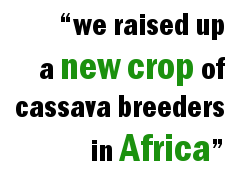 Chiedozie emphasises that such training opportunities are vital for the future food security of Africa. “We raised up a new crop of cassava breeders in Africa – people who were bold enough to take up a molecular breeding project and pursue it with support from the international centres. And today we are seeing the results of that. Cassava breeding programmes are standing today because of our quality of seeds sown in the past.”
Chiedozie emphasises that such training opportunities are vital for the future food security of Africa. “We raised up a new crop of cassava breeders in Africa – people who were bold enough to take up a molecular breeding project and pursue it with support from the international centres. And today we are seeing the results of that. Cassava breeding programmes are standing today because of our quality of seeds sown in the past.”
The networking opportunities offered by the Cassava Community of Practice – founded by GCP and now hosted by the Integrated Breeding Platform (IBP) – have meant that Chiedozie and his colleagues could expand their collaboration at the local, national and regional levels: “We now have a network of cassava breeders that you can count on and relate with in different countries. This has really widened our horizons and also made our work more visible,” he says, citing effective links formed with Côte d’Ivoire, Ethiopia, Ghana, Liberia, Malawi, Mozambique, Sierra Leone and South Sudan.
A paradigm shift
These opportunities have led to what Chiedozie calls a ‘paradigm shift’ in how national research agencies are viewed by donors and research investors: “GCP helped us to build an image for ourselves in Nigeria and in Africa, and this created a confidence in other global actors, who, on seeing our ability to deliver results, are choosing to invest in us.
“Our work with GCP helped us to gain that capacity that we needed to be able to negotiate or even make a request for funding. And people are able to trust that you can deliver if you have delivered in the past for an organisation like GCP. So it gave us credibility; it gives us a platform to be able to speak to donors directly, and donors can now approach us, which never used to happen in pre GCP days.”
This newly found confidence and profile sees the NRCRI cassava team currently engaging with the Bill & Melinda Gates Foundation and the CGIAR Research Program on Roots, Tubers and Bananas (RTB) on research that will expand on and follow through on what GCP started.
Hear from Chiedozie on the beneficial outcomes of GCP – in terms not only of variety releases but also of attracting further projects, prestige, and enthusiastic young breeders – in the video below (or on YouTube):
“Despite the social injustice around me, I always thought there was opportunity to improve people’s lives. This is what the GCP-supported research has helped me to do, even faster than I would have believed possible.”
More links
- Here on the Sunset Blog: Cassava: ‘there is life’ for African farmers | partnership with NRCRI
- All the Sunset cassava stories
- Cassava blogposts on the GCP Blog
- Cassava video playlist on cassava – starting with Chiedozie (on YouTube)
- Cassava Community of Practice (on IBP website)
- Cassava Research Initiative | InfoCentre
- View Chiedozie’s 2013 presentation from the GCP General Research Meeting: ‘Improving and deploying markers for biotic stresses in cassava’ (on SlideShare):







